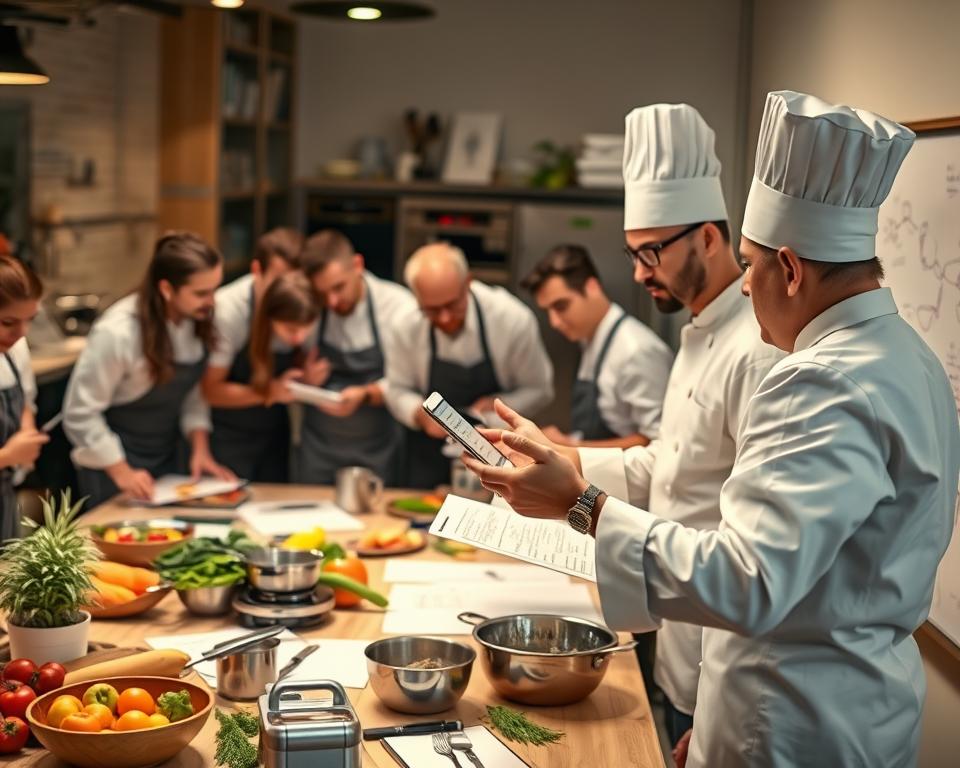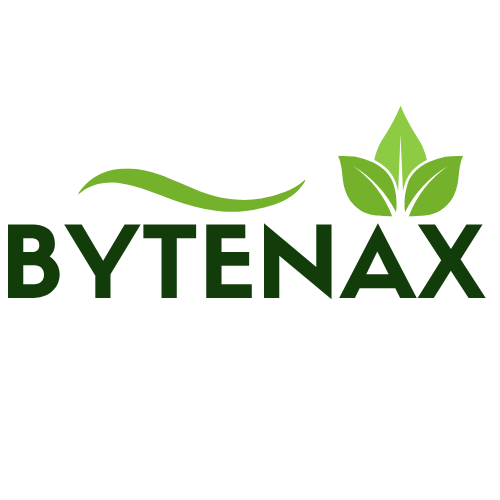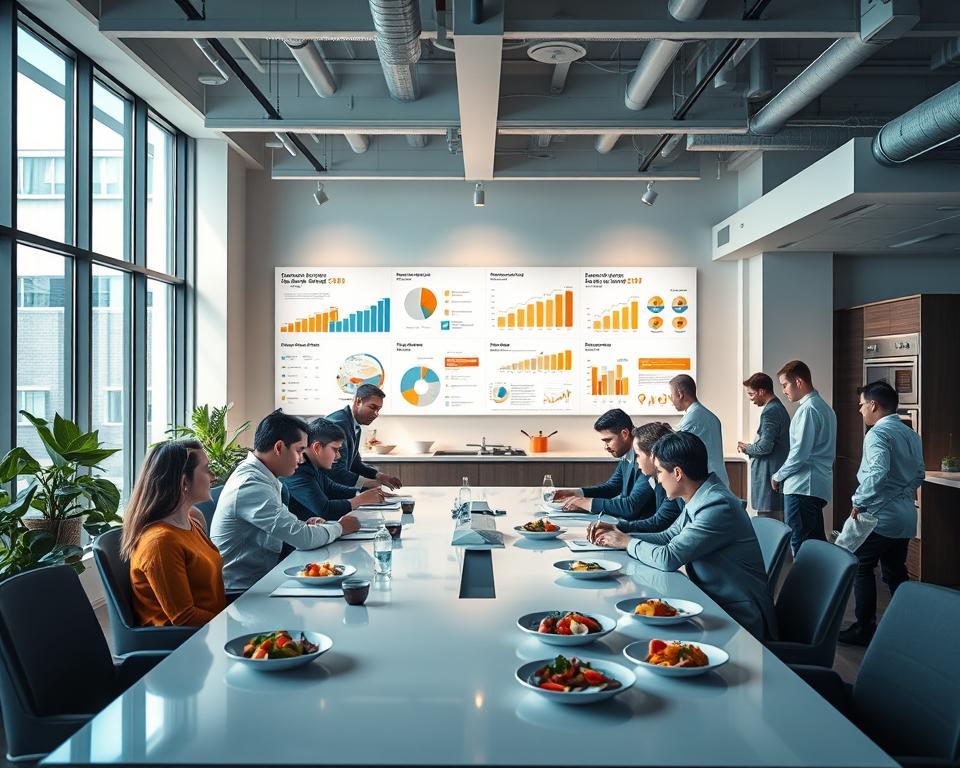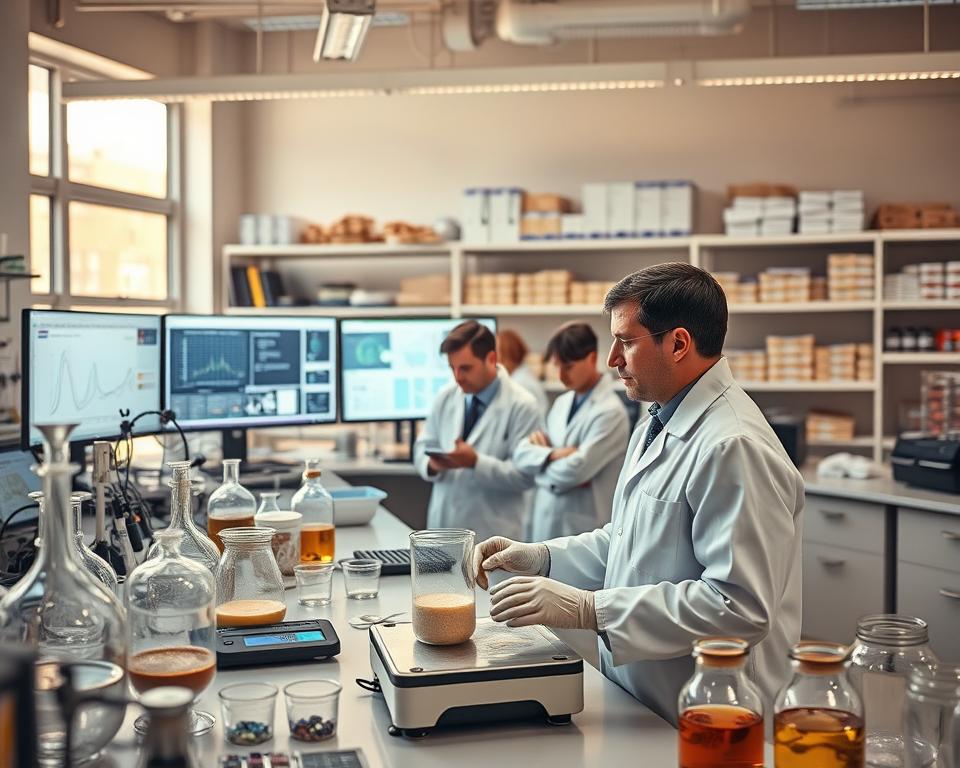Оголошення
Фудтех is reshaping how you eat, buy, and think about food in the United States right now.
Are you ready to ask which innovations will actually reach your plate this year and which are still lab ideas?
This short guide maps practical future food moves for 2025 and shows how the food system must balance bold innovation with real-world limits.
You’ll get a clear view of market momentum, the sector’s potential, and simple action steps you can use today.
We focus on solutions that matter to consumers: taste, price, and access — not just hype.
Оголошення
For a deeper industry perspective on where investment and technology are heading, see this vision for the future of food.
Expect concise metrics, real tools, and grounded advice so your team can move from pilot to scale with fewer surprises.
Introduction: Foodtech examples reshaping the U.S. food system in 2025
This year, future food innovations are targeting practical gains for producers and shoppers alike.
Оголошення
Investors and operators focus on resilience, traceability, and scalable ingredient design. Key areas include CRISPR resilience, precision fermentation, cultivated meat, upcycling, regenerative agriculture, and functional beverages. AI is speeding strain design and operational efficiency, while targeted venture capital continues to fund high-potential pilots despite overall capital limits.
Why 2025 matters
2025 concentrates market and industry energy on moves that deliver near-term impact and long-term сталий розвиток. Cost pressure and supply risks push teams toward measurable wins. You’ll see investment flow into lanes that show clear metrics and faster de-risking.
How this guide is structured
The list is broken down by theme so you can jump to what matters for your role. We flag where pilots make sense, where regulation may affect timelines, and which consumer shifts are driving product and ingredient choices.
industry trends and practical metrics are woven through the sections so you can move from insight to action. Consult qualified professionals for personalized health or regulatory advice.
Market snapshot and metrics: funding, adoption, and the 2025 opportunity
Capital and customer demand are steering the sector toward practical, deployable solutions in 2025. You’ll see where the market is heating up, what to prepare for, and which moves you can make now to reduce risk.
Capital flows and investor focus areas
Venture capital and other investments are backing CRISPR-enabled crop resilience, precision fermentation, traceability, food safety AI, and upcycling. That investment mix favors technology that lowers cost and raises quality.
Key regulatory milestones
FDA’s Food Traceability Rule becomes effective January 2026. Use 2025 as the prep year to align your supply chain and chain partners for end-to-end tracking.
What growth rates signal
The industry is projected to grow at a 9.9% CAGR through 2030. That growth creates potential for startups and operators, but demand pressure means you must set clear annual targets and measure unit economics.
- Focus pilots on retrofit-friendly tech to bridge challenges and cash limits.
- Prioritize predictive analytics, ingredient design, and transparency.
- Translate market signals into measurable goals for the next year.
Foodtech examples: the definitive 2025 list
You can now find tangible products and pilot solutions that bridge labs and local grocery shelves.
Alternative proteins & precision fermentation
Plant-based alternatives use extrusion and fermentation to mimic texture and bite. Some brands combine precision fermentation to add dairy-like fats and proteins. 3D printing is being used for layered textures in premium products.
Upcycling and surplus platforms
Companies turn byproducts into new ingredients. Surplus redistribution platforms move good food from stores to hungry buyers fast. These circular models cut waste and add value to the supply chain.
AI-enabled safety and smart packaging
IoT sensors, blockchain tracking, and AI quality checks flag problems before shelves do. Smart packaging can extend shelf life and give you real-time freshness info.
Vertical farming and CEA
Controlled environment agriculture uses LEDs and automation for consistent greens near cities. That lowers transit time, improves taste, and gives retailers steady supply.
- What consumers get: better taste, consistent texture, sensible prices, and clearer sourcing.
- Where firms win: lower waste, improved margins, and stronger trust through transparency.
Precision fermentation and synthetic biology: from promise to price parity
New tools are helping manufacturers turn engineered microbes into consistent, lower-cost food components.
What’s new in 2025: AI-guided strain design and host optimization
AI-guided technology speeds strain design and host optimization to lift titers and throughput. Platforms like Protera’s MADI accelerate development of protein-based ingredients and functional specs.
Use cases: enzymes, fats, and dairy analogs
Practical outputs include specialty enzymes, dairy analog fats that improve melting, and proteins that boost foaming or stability. These ingredients fit into existing formulations to improve taste and texture.
Cost, scalability, and compatibility with existing assets
Design-for-installation matters: many approaches target retrofit into standard fermenters to cut capex and move pilots faster into commercial production.
- Cost levers: strain performance, continuous processing, and waste-stream feedstocks.
- Operations: bioreactor utilization, downstream processing, and QC automation.
- Market move: partnerships that pair design platforms with manufacturers speed scale and market access.
Regulatory and timelines: expect stepwise tech readiness and clear labeling paths. That keeps consumer trust and helps the broader industry deliver more reliable food at lower cost.
Cultivated meat: regulatory reality, costs, and consumer acceptance
Cultivated meat projects are moving from lab tests toward real-world pilots, and you need clear signals on cost, approval, and sensory fit.
Ethical positioning and infrastructure resilience
Ethics remain a public story: many consumers respond to welfare and supply-security messages. You should frame offerings around transparency and sourcing.
Infrastructure resilience matters too. Diversified processing hubs and flexible bioreactors help integrate new protein lines into existing food networks.
The roadblocks: scale-up economics, approvals, and the “bite test”
Cost and regulation are the twin constraints. Cell-line performance, media costs, and bioreactor throughput shape unit economics for production.
- Scaffolding and structuring that pass the bite test for texture and aroma.
- Downstream harvest, quality control, and labeling pathways tied to U.S. approvals.
- Staged cost cuts: media optimization, continuous reactors, and hybrid plant blends to lower price per kg.
Retail and foodservice pilots are the next step to gather real feedback. With realistic timelines, you can plan partnerships and menu R&D that match market potential while protecting quality for the consumer.
Alternative proteins beyond meat: multi-functional ingredients and cocoa alternatives
New ingredient approaches are letting chefs and product teams solve taste and cost at once.
Plant-derived, fermentation-enabled, and insect/algae-based options diversify menus and reduce supply risk. You’ll explore protein sources that fit baking, confectionery, and beverages without sacrificing texture or flavor.
Closing gaps in fats, sugar alternatives, and chocolate supply chain risks
Investors expect traction in cocoa alternatives as prices climb and climate stress limits harvests. Fermentation and plant cell culture can match chocolate flavor and mouthfeel while cutting commodity exposure.
Taste, function, and affordability in practice
Multi-functional ingredients replace low-value additives and boost emulsification, shelf life, and mouthfeel. That lowers formulation cost and speeds rollout across foodservice and retail.
- Value levers: cost stability, sensory parity, and fewer allergens.
- Market paths: co-development with chefs, private-label launches, and targeted foodservice pilots.
- Sustainability impact: reduced land use and better byproduct use for higher overall value.
Labeling should remain clear so consumers understand what’s inside. Clear names and simple ingredient callouts help products gain trust as they scale in 2025.
Food as culture meets function: functional beverages and “food-as-medicine” trends
Functional drinks now live at the intersection of culture, taste, and daily habit. You’ll see products that favor local flavor profiles, easy rituals, and clean-label ingredients over clinical language.
Microbiome-informed formulations and clean-label ingredient design
Microbiome-guided choices shape ingredient lists without making medical claims. Formulators use gentle prebiotics, botanical extracts, and tested delivery systems to support normal digestion and balance.
Responsible framing and gastronomic insight
Focus messaging on taste, routine, and daily well-being rather than cures. That keeps you aligned with regulators and builds trust with consumers.
- Product fit: products that pair with plant-based or cultivated meat menus boost meal appeal.
- Tech & innovation: advances improve solubility, stability, and flavor release.
- Sustainability: upcycled botanicals and local sourcing lower impact.
- Challenges: claims substantiation, packaging, and consumer education require iterative testing.
“Iterative consumer testing is the fastest path to recipes and messages that resonate.”
Food safety, supply chain, and traceability: compliance as innovation
Modern traceability tools are turning compliance work into a source of operational advantage for producers and retailers. Use 2025 to build systems that reduce risk and improve margins before the FDA rule takes effect in January 2026.
Blockchain, biosensors, and AI for proactive risk detection
Map critical tracking events first. Start with high-risk SKUs and log timestamps, locations, and handlers. Add biosensors and AI for early hazard flags so you move from recall reactions to prevention.
FDA’s Food Traceability Rule: what producers and retailers need to prepare
Practical 2025 steps:
- Audit your current data capture and identify gaps against the rule.
- Pilot interoperable ledgers or trusted databases with select suppliers.
- Integrate sensors with existing production systems to avoid major retrofit costs.
- Train staff, update SOPs, and validate vendors before wider rollout.
- Key challenges: data standards, scanning compliance, and supplier onboarding.
- Measured impact: faster time-to-trace, fewer recalls, and lower write-offs.
- Budget tip: fund pilots from inventory-accuracy savings for quick wins.
“Compliance upgrades can become a customer-trust and retail-partnership advantage.”
AI and software across the value chain: from R&D to waste reduction
Smart software is now the lever that turns scattered data into timely decisions across farms, kitchens, and stores. You can use these tools to cut costs, reduce waste, and speed new product work.
Predictive analytics for inventory, demand, and food safety
AI models forecast demand and optimize ordering so shelves stay fresher and margins improve. ICL Planet-style analytics also flag safety risks before they become recalls.
Product development acceleration: data-driven formulation and testing
AI narrows live tests by simulating ingredient interactions and ranking promising formulations. That shortens cycle time and lowers lab costs for production-ready recipes.
Software for transparency, marketplace efficiency, and farm management
Platforms like FoodHack automate traceability and dynamic pricing to cut waste. Marketplaces and farm tools (per Alexander Clifford) connect quality, weather, and operations data for smarter sourcing.
- What you gain: lower shrink, faster new-product cycles, and clearer traceability for retailers.
- Plug-in wins: startups deliver modules that tie into ERPs and POS for quick payback.
- KPIs to track: shrink reduction, service level, cycle time, and yield improvement.
“Turn data into simple daily actions — dashboards should reduce manual work, not add it.”
Resource efficiency and regenerative agriculture: producing more with less
On many farms, small tech changes now deliver measurable cost cuts and healthier soils within a single season. You’ll see how practical gains tie directly to farm income and downstream supply consistency.
Precision spraying and gene-editing to reduce inputs responsibly
AI-guided, precision spraying and machine vision cut pesticide use and drift on broad-acre crops. That lowers input spend and improves yields, giving you faster payback on equipment and service fees.
Gene-editing tools like CRISPR help create resilient varieties that need less water, fertilizer, and chemical treatment. Responsible deployment and local oversight keep regulatory and market trust intact.
Mitigating methane and manure emissions with farmer-first ROI
Enteric methane supplements and low-labor manure systems fit many barns and lagoons. Aim for options that reduce labor, save fuel, or cut fertilizer purchases so benefits show up on your next balance sheet.
- On-farm wins: lower chemical and fuel costs, better soil health, and biodiversity gains that boost long-term production.
- Processor impact: more stable raw inputs improve quality and reduce supply risk for food processors.
- Sector economics: co-op and processor partnerships can co-fund pilots and share upside.
- Challenges: hardware reliability, training, and region-specific agronomy require staged trials.
“Start with a small pilot, measure input savings and yield change, then scale where ROI is clear.”
Use simple metrics—input spend per acre, yield per acre, and net margin change—to validate impact. Those numbers make it easy to justify investment and win partners across the value chain.
Waste-to-value and circularity: measurable impact and business models
Turning leftover streams into steady revenue is now a practical play for many brands. You can cut food waste while creating new products that sell. The focus is on measurable wins: diversion rates, cost savings, and lower emissions.
Upcycled ingredients and smart packaging
Upcycling turns byproducts into saleable ingredients and stabilizes supply and price. Smart packaging technologies monitor freshness and cut shrink during transit and storage.
Redistribution platforms and monetization
Redistribution moves surplus to communities fast and safely. Other solutions monetize residues into higher-value inputs for new product lines and manufacturing feedstocks.
Metrics that matter
- Diversion rate: pounds diverted from landfill per month.
- Cost savings: lower disposal fees and new revenue per SKU.
- Emissions avoided: CO2e saved from reduced landfill and transport.
Practical next step: audit byproduct streams, pilot a packaging sensor, and partner with a redistribution platform to capture immediate value.
Action plans for 2025: operators, startups, and investors
Start small and make each step auditable. Map the gaps that matter most, run short pilots, then scale what shows measurable value. This practical way cuts risk and brings partners to the table fast.

For operators: audit traceability, pilot AI in quality, and trial alt-ingredients
Focus on three quick wins: map traceability gaps across your supply chain, pilot AI quality control on one high-risk SKU, and test an alternative ingredient in a single hero product.
- Checklist: gap map, sensor integration, vendor SOPs, training plan.
- KPIs: yield, shrink, repeat purchase, support tickets.
- Milestones: 90-day audit, 6-month pilot, 12-month scale.
For startups: design for cost, regulation, and installation in existing assets
Design your solutions to install in current fermenters or kitchens. That reduces capex barriers and speeds sales cycles to retailers and foodservice partners.
- Checklist: retrofit spec, regulatory path, TCO model, retailer pilot plan.
- Tip: target co-investment with corporates or family offices to speed market entry.
For investors: diligence signals in cost curves, regulatory fit, and consumer value
Look for clear cost curves, a defensible regulatory path, and a simple consumer value proposition. Favor teams that can show installable solutions and repeatable pilots in the sector.
- 90 days: validate tech fit and early KPIs.
- 6 months: confirm unit economics and partner commitments.
- 12 months: scale via co-investments and retail validation.
“Build cross-functional teams so adoption is smooth and learnings feed the roadmap.”
Висновок
Practical choices—pilot design, traceability upgrades, and ingredient swaps—are the levers that matter now. You have a concise map of the food tech moves shaping the U.S. food system in 2025, from precision fermentation and fermentation-led design to cultivated meat and alternative proteins.
Supply chain transparency and food safety readiness are central to resilience and food security. Technologies like AI, biosensors, smart packaging, upcycling, and regenerative practices cut food waste and improve production value.
Startups, industry partners, and investment are aligning to pave the way for real products and scaled solutions this year. Challenges remain, but market signals make potential paths clearer.
Свідомо досліджуйте культуру харчування, apply the action steps, and share results with partners. For personal health choices, consult qualified professionals; use this guide as practical context, not medical advice.



